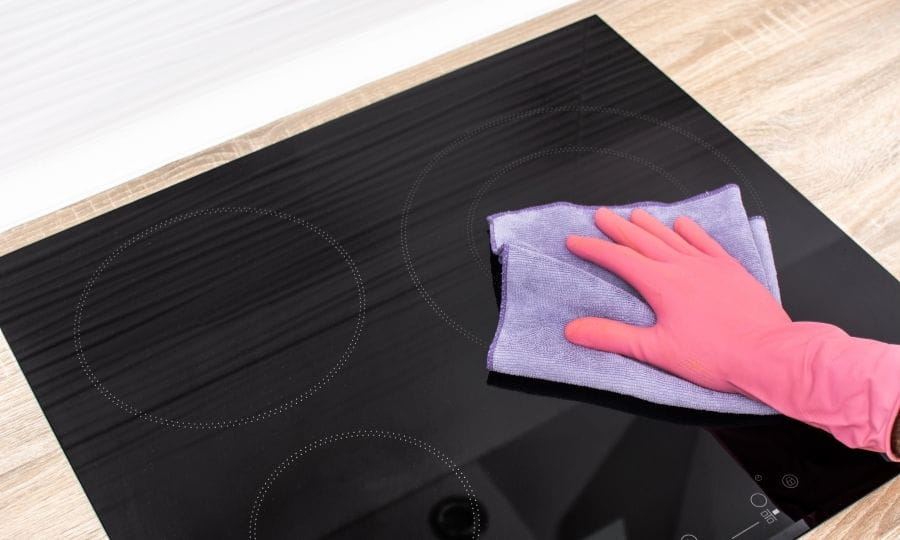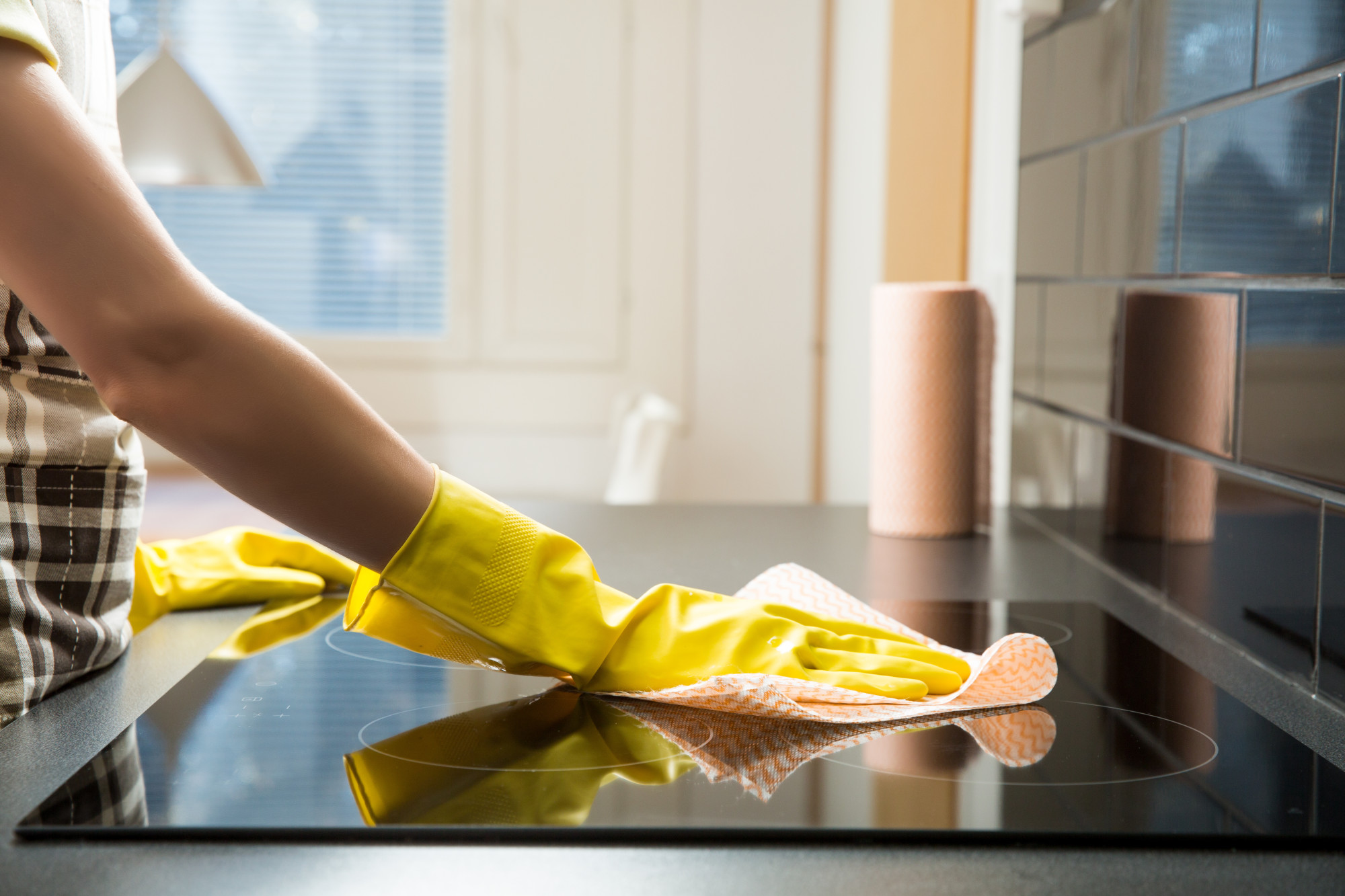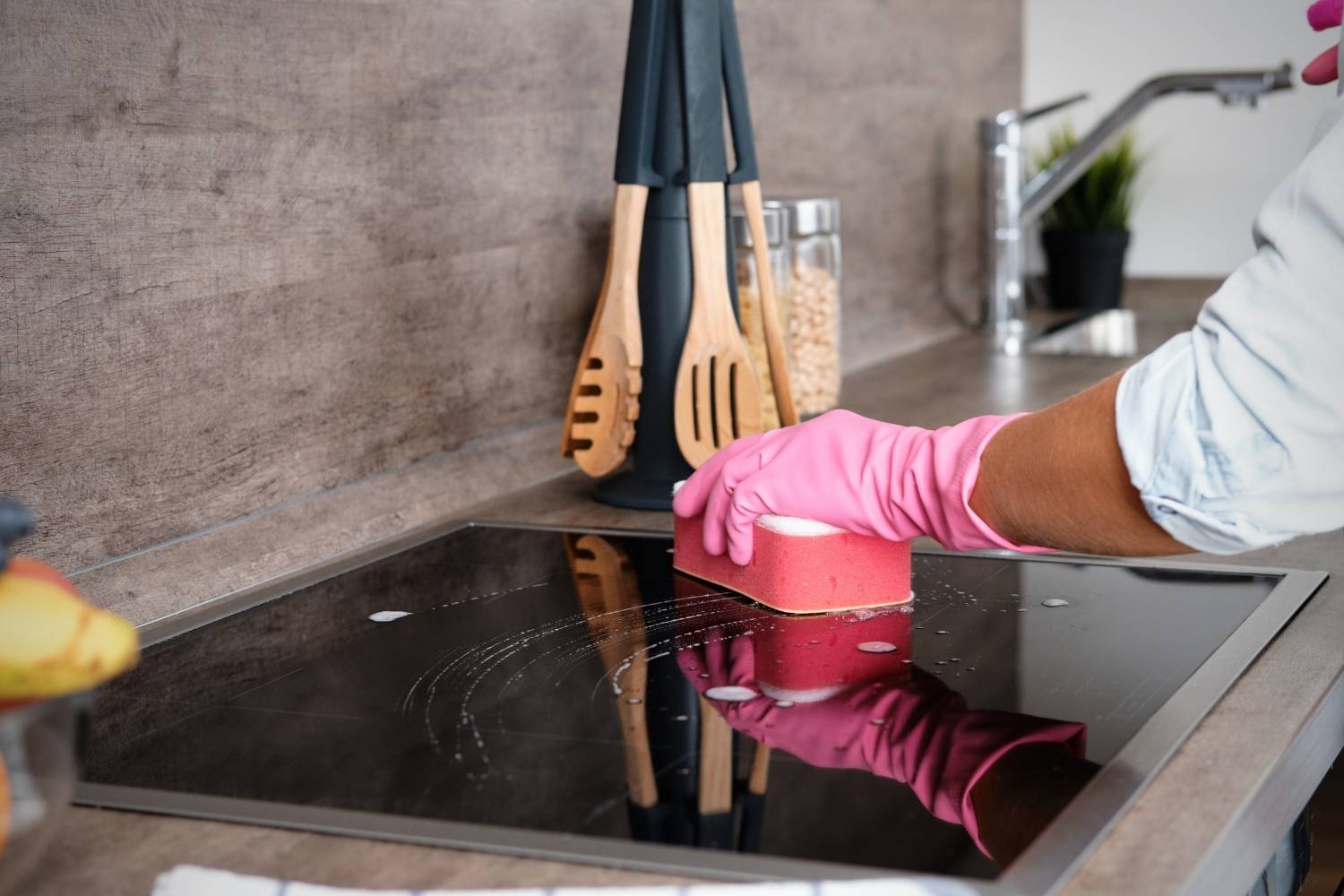How to Clean an Induction Stove Top: A Comprehensive Guide
I. Introduction to Cleaning an Induction Stove Top

A. Understanding the Importance of Proper Cleaning for Induction Stove Tops
Proper cleaning and maintenance of an induction stove top are essential for its longevity and optimal performance. Regular cleaning helps remove dirt, spills, and food residues that can affect the stove‘s heating efficiency and appearance.
B. Benefits of Regular Maintenance and Cleaning
Regular maintenance and cleaning of an induction stove top offer several benefits. It helps prevent the build-up of residues that can affect heat transfer, ensures a hygienic cooking surface, and improves the overall aesthetic appeal of the stove top.
II. Precautions and Safety Measures
A. Turning Off and Cooling Down the Induction Stove Top
- Ensuring Safety and Preventing Accidental Burns
Before cleaning, ensure that the induction stove top is turned off and has cooled down. This minimizes the risk of accidental burns during the cleaning process.
- Allowing Sufficient Time for the Surface to Cool
Induction stove tops can retain heat even after they are turned off. Allow sufficient time for the surface to cool down before starting the cleaning process.
B. Disconnecting the Power Source

- Unplugging the Stove Top from the Electrical Outlet
To ensure safety while cleaning, unplug the induction stove top from the electrical outlet. This prevents any potential electrical accidents.
- Minimizing the Risk of Electric Shocks
Disconnecting the power source reduces the risk of electric shocks while cleaning the induction stove top.
III. Daily Cleaning Routine
A. Wiping Down the Induction Stove Top After Each Use
- Using a Soft, Damp Cloth or Non-Abrasive Sponge
After each use, wipe down the induction stove top with a soft, damp cloth or non-abrasive sponge. This removes any spills or residue.
- Removing Dirt, Spills, and Residue for a Clean Surface
Ensure that the cloth or sponge is damp, but not soaking wet, to effectively remove dirt, spills, and residue from the surface of the induction stove top.
B. Drying the Stove Top to Prevent Streaks and Water Marks
- Using a Clean, Dry Cloth or Paper Towel
After wiping down the surface, use a clean, dry cloth or paper towel to dry the induction stove top. This prevents streaks and water marks.
- Buffing the Surface for a Spotless Finish
To achieve a spotless finish, gently buff the surface with a soft, dry cloth, ensuring all moisture is removed.
IV. Deep Cleaning Methods

A. Addressing Stubborn Stains and Build-Up
- Removing Burnt-on Food and Grease Deposits
For stubborn stains or burnt-on food and grease deposits, use specific cleaning methods or products recommended by the stove manufacturer. Follow the instructions carefully to avoid damaging the surface.
- Using Gentle Cleansers or Induction Stove Top Cleaners
When necessary, use gentle cleansers or induction stove top cleaners specifically designed for induction stove tops. Avoid using harsh chemicals or abrasive cleaners.
B. Avoiding Harsh Abrasives or Scrubbing Tools
- Selecting Non-Scratch Cleaning Implements
When cleaning, avoid using harsh abrasives or scrubbing tools that can scratch or damage the induction stove top surface. Use non-scratch cleaning implements, such as soft cloths, sponges, or non-abrasive brushes.
- Preventing Surface Damage and Scratches
Take care to prevent surface damage and scratches by using gentle cleaning techniques and avoiding abrasive materials.
V. Cleaning Techniques for Specific Induction Stove Top Components
A. Cleaning the Control Panel and Knobs

- Wiping Down the Panel with a Damp Cloth
To clean the control panel and knobs, gently wipe them down with a damp cloth. Ensure that the cloth is not too wet to prevent moisture from seeping into the electrical components.
- Using Mild Soap Solution for Stubborn Residue
If there is stubborn residue on the control panel or knobs, use a mild soap solution applied to a damp cloth. Wipe away the residue and dry the surface thoroughly.
B. Maintaining Ventilation Grates and Filters
- Removing and Cleaning Grease Filters
If your induction stove top has ventilation grates and grease filters, remove them regularly and clean them thoroughly. Grease filters can usually be washed with warm, soapy water and air-dried before reinserting.
- Vacuuming or Wiping Down Ventilation Grates
To keep the ventilation grates clean, use a vacuum cleaner or wipe them down with a damp cloth. This prevents the accumulation of dust and debris.
VI. Maintenance and Preventive Care
A. Regular Inspection for Loose or Damaged Parts

- Checking for Loose Knobs or Broken Elements
Regularly inspect the induction stove top for loose knobs or broken elements. If any parts are loose or damaged, address the issue promptly to prevent further damage or safety hazards.
- Addressing Minor Repairs or Replacements Promptly
If you notice any minor repairs or replacements that need to be done, such as loose knobs or damaged electrical components, contact a professional technician or the stove manufacturer for assistance.
B. Using Protective Mats or Covers
- Preventing Stains, Scratches, and Spills
To further protect the induction stove top, consider using protective mats or covers. These help prevent stains, scratches, and spills that can damage the surface.
- Choosing Appropriate Mats or Covers for Induction Stove Tops
Ensure that the mats or covers are specifically designed for induction stove tops and are safe to use with the appliance. Follow the manufacturer’s guidelines for proper usage.
Cleaning an induction stove top requires regular maintenance and proper cleaning techniques. By following a daily cleaning routine, addressing stubborn stains and build-up, and practicing preventive care and maintenance, you can keep your induction stove top looking clean and functioning optimally for years to come. Remember to always follow the stove manufacturer’s guidelines and recommendations for cleaning and maintenance.
In conclusion, a clean induction stove top not only enhances the appearance of your kitchen but also ensures optimal performance. By following proper cleaning routines, including daily wiping and drying, individuals can maintain a spotless surface. Deep cleaning methods help address stubborn stains and build-up, while avoiding harsh abrasives. Taking care of specific components such as the control panel and ventilation grates contributes to the longevity of your induction stove top. Regular inspections and preventive care, along with the use of protective mats or covers, further preserve its beauty and functionality. By committing to regular cleaning and maintenance, individuals can enjoy a pristine and efficient induction stove top experience in their kitchen.
